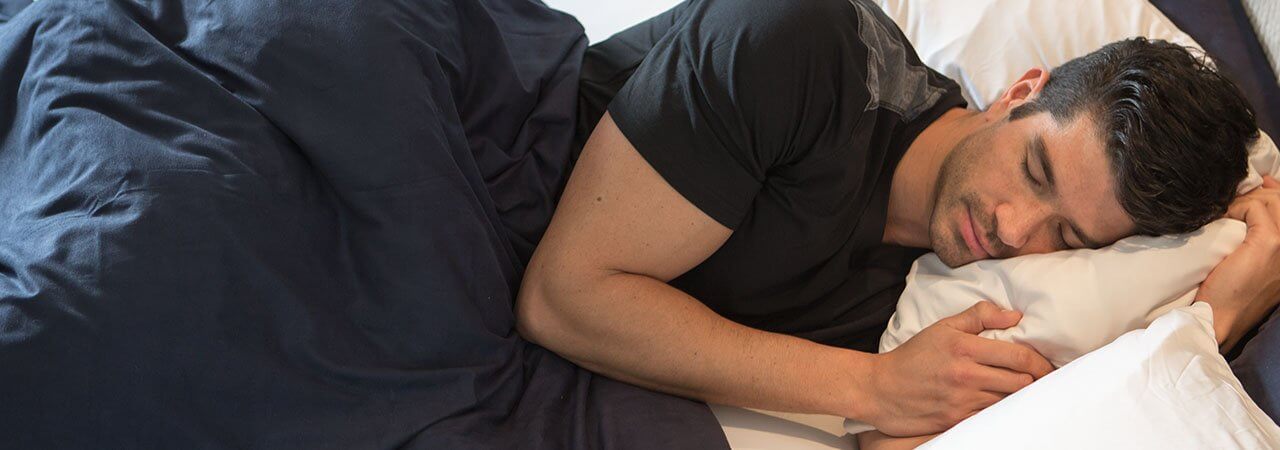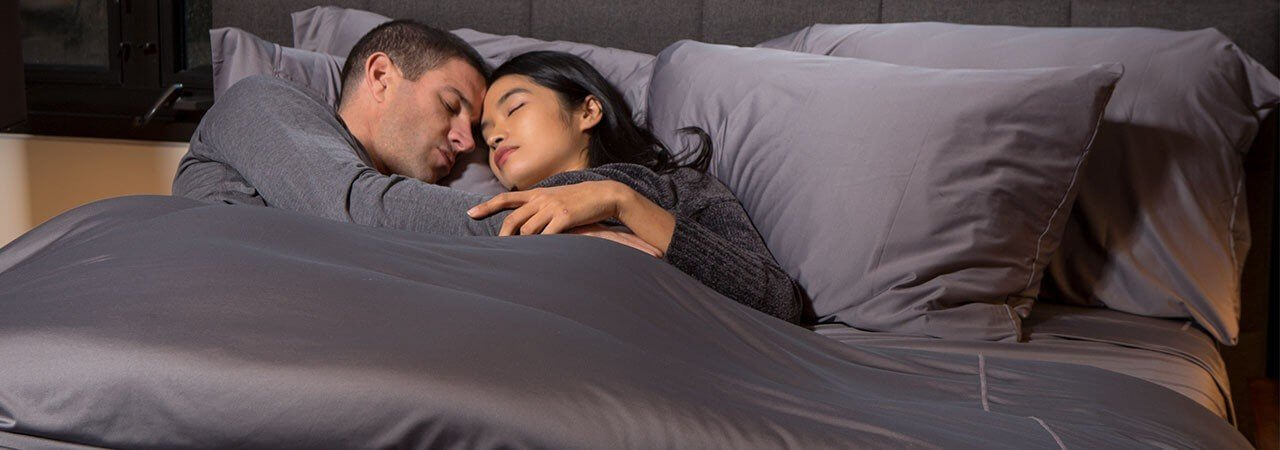When your day is done and it's time to hit the hay, do you ever get caught up in the simple wonder of sleep? You close your eyes and then some eight hours later — give or take a few — you're rested, recharged and ready for another day. So what really happens when you surrender your eyelids to your dreams and let your body rest? Your curiosity will be pleased to know that something very interesting takes place as you sleep.
When you doze off, you go through two distinct types of sleep with varying patterns of activity, repeated over and over for four to six cycles all night long. To help you understand what exactly happens when you drift-off into the comfort of our ridiculously soft SHEEX, here are a few answers to some of the questions that might be haunting your dreams: Am I really paralyzed during sleep? What is a sleep cycle? Did someone say circadian rhythm? How much sleep do I need?
What Are Sleep Cycles?
Once you fall asleep, there is still a lot of activity going on inside your brain as it enters different sleep stages or cycles. According to Psychology Today, "one sleep cycle lasts about 90 minutes, and during that time we move through five stages of sleep." The first four stages that occur in one complete cycle are NREM, otherwise known as the non-rapid eye movement stages. The fifth stage in one complete cycle is REM, otherwise known as the rapid eye movement stage. Each one of these sleep cycles is repeated four to six times per night.
What Goes On During One Sleep Cycle?
Do you remember watching your favorite show on Netflix and then all of a sudden you weren't? You swore you remembered what happened but you were also fast asleep. Digging deeper into each stage will help you understand things such as that weird falling sensation, why people can't wake you no matter how hard they try, and when your dreams actually take place. 
- Stage 1 (2% to 5% of total sleep time): In this first stage of NREM, you are greeted with a light sleep. You're slowly tuning out your favorite show while your heartbeat and brain waves slow down. Your muscles relax with that occasional twitch you're all too familiar with. Feel like you're falling? Nope, you're just in the throes of your first stage of sleep.
- Stage 2 (45% to 55% of total sleep time): Similar to the first stage, everything slows down even more. Your body temperature begins to drop, and your eye movement stops. Most of your repeated cycles are actually in stage two.
- Stages 3 and 4 (5% to 25% of total sleep time): These two stages are combined because they give you that rejuvenated — "I feel like I just slept for ages!" — feeling. This occurs in longer periods during the first half of your sleep. In these stages, everything continues to decrease to its lowest level of frequency. Your heartbeat, brainwaves and body temperature all reach an optimum low. If someone were to try and wake you, good luck to them.
- Stage 5 (20% to 25% of total sleep time): This is where REM occurs, about 90 minutes after falling asleep. Your eyes move rapidly from side to side behind your closed eyelids, and your breathing becomes faster and irregular while your heart rate increases. This is where you dream. Your arm and leg muscles become temporarily paralyzed, preventing you from acting out your vivid dreams. In this stage, your brain is more active, but your body still knows that it's time to rest. How cool is that?
Each of these stages repeats throughout your slumber, which explains why you might wake at certain times. This also explains why you may have several dreams, giving you ample opportunity to process the highs and lows of your daily life. In fact, Psychology Today suggests that dreams are a way in which the brain can process emotions, stimuli, memories and information — explaining why your dreams can be a little too real.
And with the REM stage of sleep taking up a total of 20% to 25% of sleep time, that gives plenty of opportunity for your dreams to run wild. Once that stage is over, though, it's back to the beginning. Your brain will go through its necessary stages and cycles of sleep so you can wake up feeling refreshed and renewed.
How Much Sleep Do You Need?
There is no concrete answer to this question because it will vary depending on your age. According to University Health News Daily, most adults thrive on seven to nine hours of sleep, while teens with developing brains need about nine and a half hours. Infants, of course, need anywhere from 16 to 18 hours of sleep per night — don't be jealous.
What Is The Perfect Sleep Time?
To determine the best time you should sleep, take a look at your circadian rhythm — or your internal clock. According to the National Sleep Foundation, "your circadian rhythm is basically a 24-hour internal clock that is running in the background of your brain and cycles between sleepiness and alertness at regular intervals." This is your post-lunch slump and middle-of-the-night drowsiness explained.
Paying mind to your body's circadian rhythm is how you will determine what time you should go to sleep. If that suggestion won't suffice, know that there are optimal windows for you to test your bedtime schedule. Sleep.org recommends that you begin by starting your bedtime between 8 p.m. and midnight. Then, adjust accordingly depending on how your mind and body react. If you're lying around in bed for too long without a minute of sleep in sight, try adjusting your bedtime to a later hour.
Either way, once you figure out what time works best for you, stick to a similar routine even on the weekends so your internal clock ticks just right. With a better understanding of how sleep cycles work, you can set up a bedtime routine that works best for you. In the process, we hope to help you SLEEP COOL. SLEEP DRY. SLEEP COMFORTABLE.™ in our SHEEX. Our ridiculously soft bedding is the cherry on top of a night of well-rounded sleep.

























